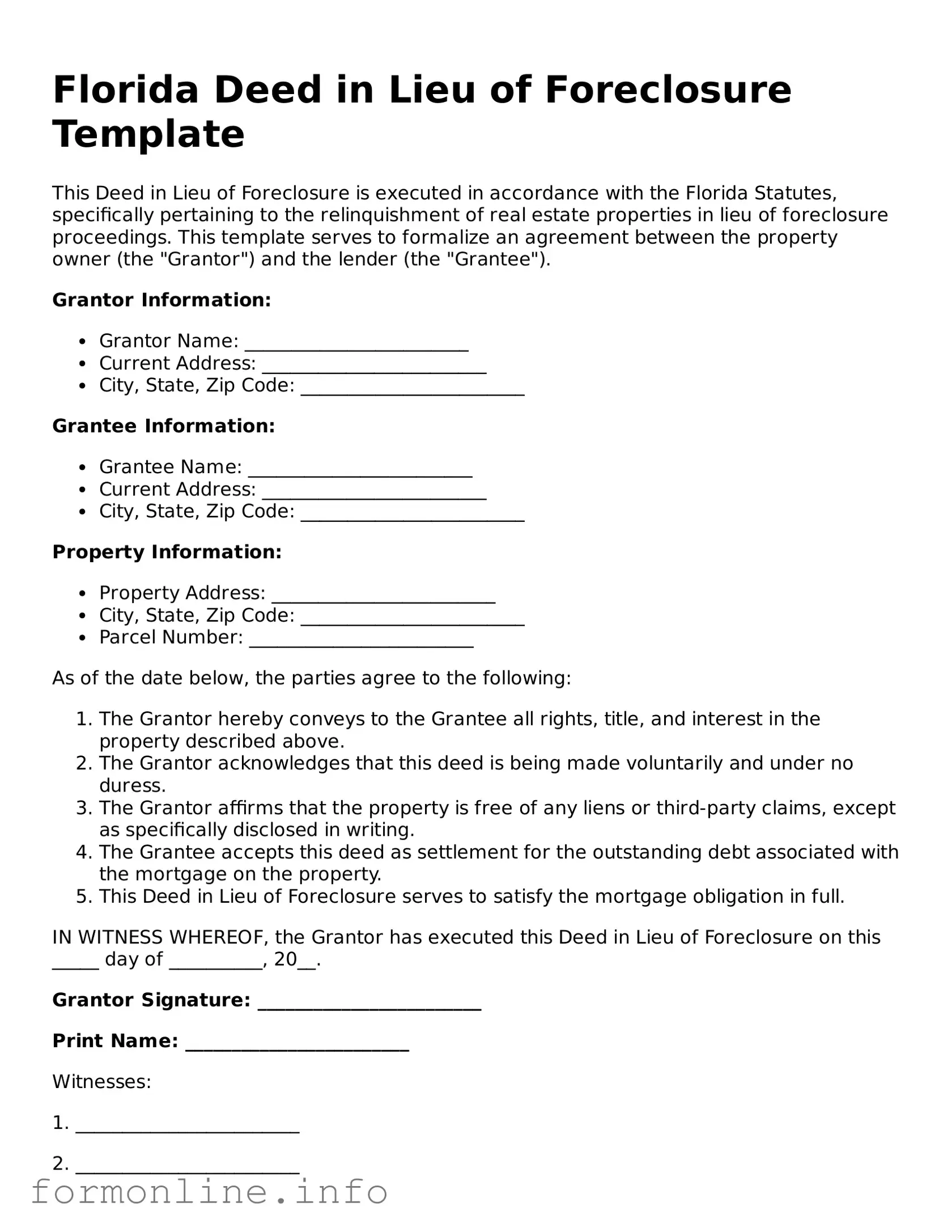Florida Deed Template
This deed is created in accordance with the laws of the State of Florida.
Grantor: ________________________________________
(Name of person/entity transferring property)
Grantee: ________________________________________
(Name of person/entity receiving property)
Property Address: ________________________________________
(Street Address, City, State, Zip Code)
Legal Description:
(Insert legal description of the property)
This deed conveys the following rights:
- The right to possess the property.
- The right to enjoy the property without disturbance.
- The right to sell or transfer the property.
The Grantor affirms the following:
- This property is free of any liens or encumbrances.
- The Grantor is the legal owner of the property.
- This transfer is voluntary and made without coercion.
In witness whereof, the Grantor has executed this deed on this _____ day of ___________, 20__.
Signature of Grantor: ________________________________________
Witness 1: ________________________________________
(Signature of Witness 1)
Witness 2: ________________________________________
(Signature of Witness 2)
State of Florida
County of ________________
On this _____ day of ___________, 20__, before me, a Notary Public, personally appeared ________________________________________ (Grantor), known to me to be the person(s) who executed the foregoing instrument.
Notary Public Signature: ________________________________________
My Commission Expires: ____________
Seal:
